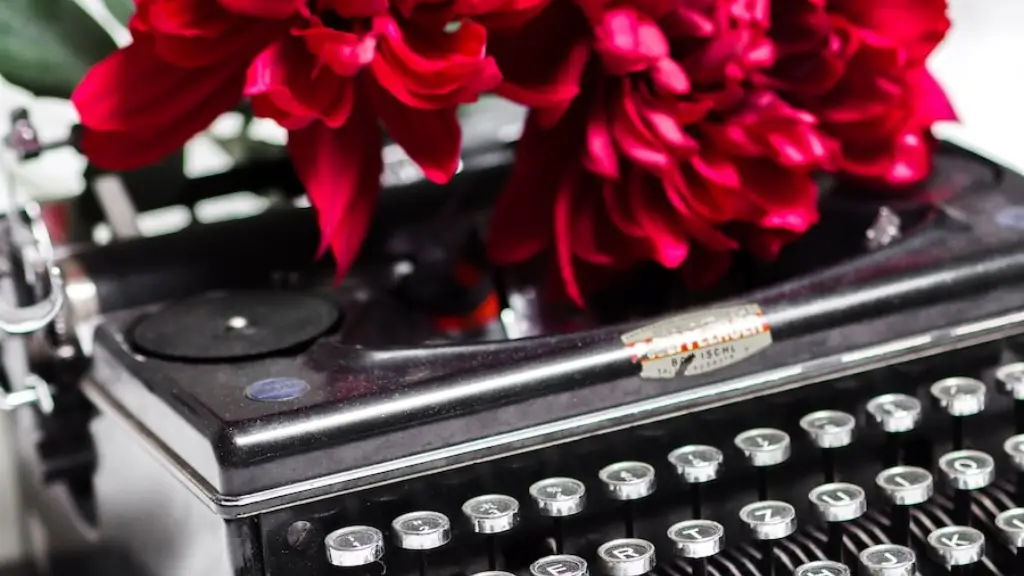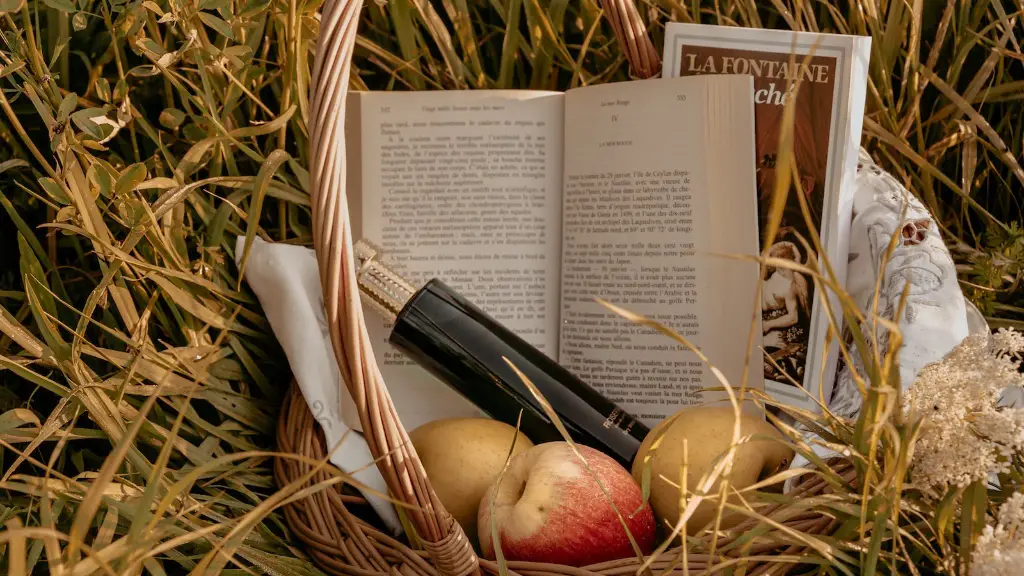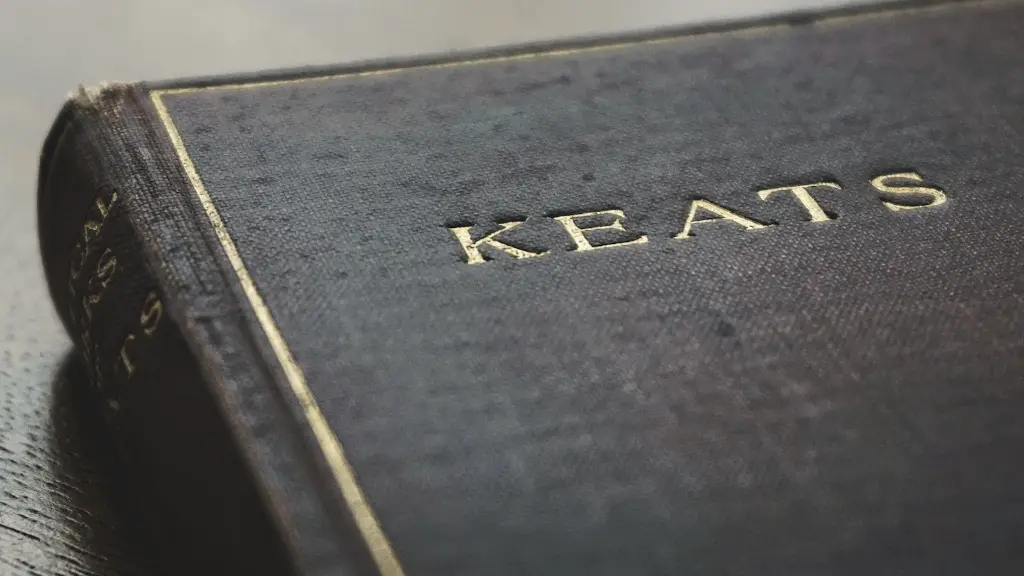What does scheme mean in poetry? Scheme is an important, yet often overlooked, tool that poets use to make their works more precise and meaningful. Scheme, or poetic devices, are tools used to create patterns and connections between key words, phrases, and ideas within a poem. It can be used to create more vivid imagery, to emphasize the emotional impact of words, and to create a more structured, organized poem. By understanding and using scheme, poets can create works of art that stand out, feel compelling, and capture the reader’s attention.
Types of Scheme
Scheme can take two primary forms: figurative language and rhyme. Figurative language is the use of metaphors and other figures of speech to create a more vivid and evocative poem. Figurative language can help poets communicate their feelings and ideas more effectively. Rhyme, on the other hand, is the matching of end sounds in different words. Rhyme is often used to emphasize certain words and phrases, creating an underlying structure that adds to the poem’s impact.
In addition to these two main types of scheme, there are also several sub-types, such as alliteration, assonance, and consonance. Alliteration is the repetition of the same sound at the beginning of multiple words or syllables. Assonance is the repetition of the same sound in the middle of two or more words. Consonance is the repetition of the same consonant sound at the end of multiple words. All of these sub-types of scheme can be used to create a more structured, intricate poem.
The Benefits of Scheme
Using scheme can add texture and emotional weight to a poem. By creating a rhythm or pattern of words, poets can evoke a certain emotional response in the reader. For example, a poem with an abundance of alliteration may convey an anxious or chaotic feeling, while a poem with a lot of rhymes may have a tranquil or uplifting effect. By incorporating different types of scheme into a poem, poets can create a unique and captivating experience for their readers.
Scheme can also help to highlight key ideas and points within a poem. Through the use of alliteration or assonance, poets can bring focus or emphasis to certain words and ideas, helping to create a clearer, more powerful message. Finally, scheme can be used to create visual interest within a poem. By incorporating different types of scheme into a poem, poets can create a more aesthetically pleasing piece of literature that appeals to the eye and sparks the reader’s imagination.
How to Incorporate Scheme
To incorporate scheme effectively into a poem, poets should consider the emotions they are trying to evoke and the message they are trying to convey. Once they have identified these elements, they can then begin to incorporate different types of scheme into their poem. It is important to remember that scheme should be used sparingly and strategically—it should not overpower the poem but rather enhance it. For example, a poet may choose to use alliteration to emphasize a certain phrase or idea, or they may use consonance to create a quiet, calming rhythm.
In addition to considering which types of scheme to use, poets should also pay attention to the structure of their poem. For example, if a poem is structured as a series of short lines, a poet may choose to use a lot of rhyme and alliteration to create a more regular rhythm. On the other hand, if a poem contains longer lines, a poet may opt for a more subtle use of assonance and consonance to create a flow.
Examples of Scheme in Poetry
To gain a better understanding of how scheme works in poetry, it is helpful to look at some classic examples. William Shakespeare’s “Sonnet 18” is perhaps the most famous example of how to use scheme effectively: “Shall I compare thee to a summer’s day?/Thou art more lovely and more temperate.” In this poem, Shakespeare uses both alliteration (“Shall I compare thee”) and rhyme (“day” and “temperate”). These schemes help to emphasize the main theme of the poem, which is the beauty of the person the poet is writing to.
Another famous example of scheme in poetry is Edgar Allan Poe’s “The Raven.” In this poem, Poe uses a slew of different types of scheme to create a haunting atmosphere: “On the morrow he will leave me, as my hopes have flown before/Twas not a bird, nor a bat, it was the Raven—” In this poem, Poe uses both alliteration (“morrow” and “hopes”) and consonance (“before” and “Raven”) to create a sharp contrast that heightens the poem’s eerie tone.
The Impact of Scheme
By understanding and employing scheme effectively, poets can create powerful, evocative works of literature. Scheme can help poets to emphasize their main points and bring focus to certain words and ideas. It can also be used to stir emotions and create a unique atmosphere within a poem. By incorporating different types of scheme, from alliteration to rhyme, poets can make their works stand out and create a captivating experience for their readers.
Recognizing and Analyzing Scheme
In order to understand how scheme works and how to best incorporate it into a poem, it is important to be able to recognize scheme when it is present in the work of other poets. By studying the works of renowned poets, readers can identify and analyze the various types of scheme they use and how they use them. This can help readers to gain an understanding of how to best incorporate scheme into their own work.
Implementing Scheme in Poetry Writing
Once a poet has identified which type of scheme they would like to use in their poem and have analyzed how it works in other poetry, they can begin to incorporate it into their own work. By choosing the right words, phrases, and sounds and incorporating them strategically, poets can create a unique and powerful poem that will captivate their reader.
Exploring Other Types of Scheme
Although alliteration, assonance, and consonance are the most commonly used types of scheme, there are also other types that can be incorporated into poetry. For example, repetition is a type of scheme where a certain phrase or word is repeated multiple times in a poem. This technique can be used to create unity, structure, and emphasis within a poem. Another type of scheme is caesura, which is the intentional interruption of a phrase or line to create emphasis or add drama to a poem. By exploring the various types of scheme and incorporating them into their works, poets can create powerful works of art.
Using Scheme to Enhance Poems
Scheme is an important tool that can be used to create a more vivid, evocative poem. By understanding how to identify and use various types of scheme, poets can create works of literature that stand out, evoke emotion, and capture the reader’s attention. Scheme is a tool that, when used correctly, can bring any poem to life and make it truly captivating.



